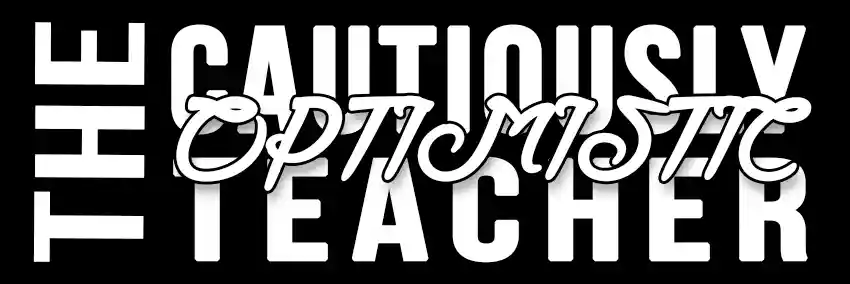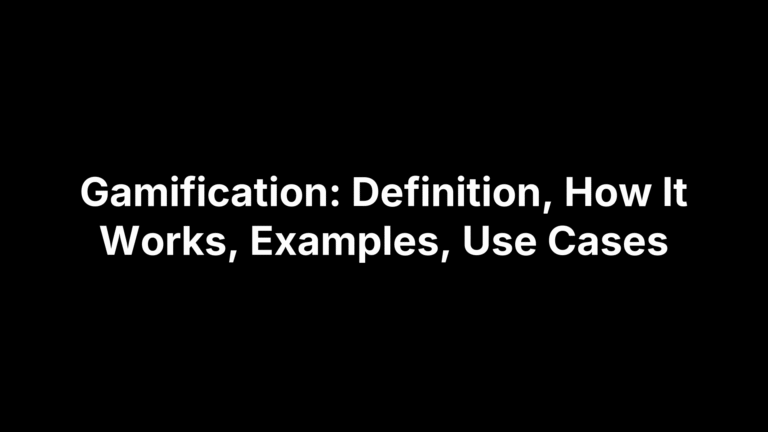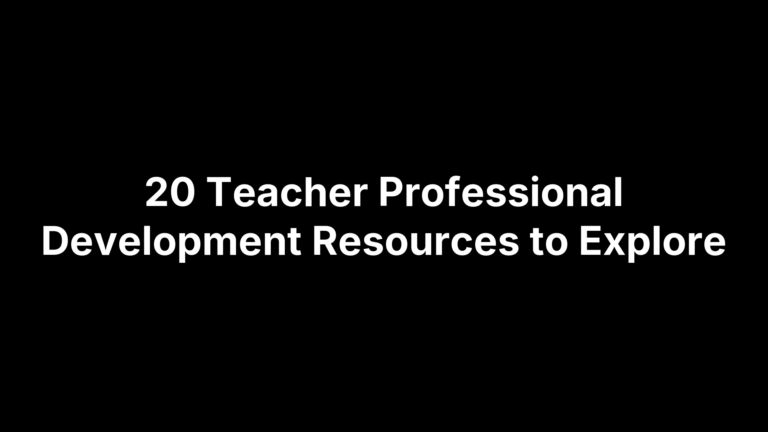Top 15 Cooperative Learning Techniques for More Engaged Students
Students accomplish more when their desks become launchpads for shared thinking rather than islands of silent struggle. Cooperative learning turns casual group work into a research-backed system where every learner carries both the weight and the reward of the task. Unlike the familiar “divide-and-conquer” approach—where one student often finishes while others coast—true cooperative learning rests on five pillars: positive interdependence, individual accountability, face-to-face interaction, explicit social-skill practice, and honest group reflection. Get those elements right and you’ll see higher achievement, stronger relationships, and far fewer off-task whispers.
The pages ahead break down 15 classroom-ready techniques—from Think-Pair-Share to Send-A-Problem—with clear setup steps, management tips, and assessment ideas. Whether you teach calculus, creative writing, or kindergarten phonics, you’ll leave with plug-and-play structures that fit tomorrow’s lesson plan. Ready to trade uneven group projects for purposeful collaboration? Let’s get started.
1. Think-Pair-Share
Think-Pair-Share is the Swiss-army knife of cooperative learning—quick to set up yet academically rigorous. It honors individual thinking before public risk-taking.
Why This Technique Works
Silent think time increases wait-time equity, then partner talk builds positive interdependence and guarantees every voice is heard. Because each student must first generate an answer, accountability stays high.
Step-by-Step Classroom Guide
- Pose a question or prompt; announce exact think time (30–90 s).
- Signal “pair”; students face neighbor and share responses, listening first then adding.
- Invite pairs to merge into fours or report to class; chart ideas for clarity.
Extensions & Assessment Tips
- Digital twist: pop the prompt in Jamboard and assign breakout pairs for virtual think-time.
- Collect exit tickets or have partners initial each other’s mini-whiteboard to document learning in seconds.
2. The Jigsaw Method
Jigsaw turns students into pieces of a learning puzzle. Rather than absorbing a lecture, each learner masters one slice of content and then teaches it back to teammates. The result is built-in interdependence: everyone’s understanding matters because everyone holds exclusive information.
Core Structure
Students first meet in “expert groups” to master a subtopic, then return to their “home groups” where every member brings a unique piece of the overall lesson. The information gap fuels positive interdependence—if any piece is missing, the picture stays incomplete.
Implementation Checklist
- Divide content into 4–6 equal chunks matched to class size.
- Create balanced home groups; assign each student a chunk.
- Regroup experts; provide guiding questions and an organizer.
- Experts return home, teach, and synthesize notes.
- Wrap with a class debrief or quiz to cement accountability.
Management & Differentiation
- Rotate scaffolded roles (summarizer, questioner, connector) to build social skills.
- Level texts or videos for mixed abilities; color-code resources.
- Grade with an individual quiz plus a group product to honor both effort and mastery.
3. Numbered Heads Together
Need a lightning-fast way to check for understanding without cold-calling the same few volunteers? Numbered Heads Together has you covered. By randomizing who speaks, it nudges every student to prepare an explanation, while team talk provides the safety net reluctant learners crave.
Quick Snapshot
Each learner receives a number within their team (1–4 works well). After a prompt, the group collaborates on an answer; the teacher then calls a random number, and the student with that number must respond on behalf of the team.
Four-Phase Procedure
- Pose a clear, answerable question; give solve time.
- Teams “put heads together” to reach consensus.
- Roll a die or spin a digital picker; call the number.
- Selected student answers aloud; class discusses accuracy.
Classroom Tips & Variations
- Display a countdown timer to keep talk focused.
- Use mini whiteboards so the whole team records the agreed answer—instant visual feedback.
- Add a “double-check” round: after hearing responses, teams revisit their reasoning and correct misconceptions, reinforcing metacognition.
4. Reciprocal Teaching
Unlike read-alouds where the teacher owns every question, Reciprocal Teaching hands the steering wheel to students. In small groups they cycle through four metacognitive roles—predictor, questioner, clarifier, summarizer—making the process of comprehension visible. Because each learner must both model and critique thinking, the structure nails positive interdependence and individual accountability, hallmarks of strong cooperative learning techniques.
What Students Do
- Predictor guesses what comes next, activating prior knowledge.
- Questioner crafts literal and inferential questions.
- Clarifier hunts for confusing words or ideas.
- Summarizer distills the passage in 1-2 sentences.
Roles rotate every paragraph or page, keeping everyone engaged.
Practical Setup
- Distribute role cards with sentence stems.
- Model a full cycle using a short text on the projector.
- Release groups with progressively longer passages; circulate to coach questioning depth.
- Provide a shared graphic organizer so groups capture collective thinking.
Assessment & Skill Transfer
- Collect written summaries or audio-record a round for rubric scoring.
- Listen for higher-order “why” and “how” questions—evidence of transfer to independent reading tasks.
- End with a quick self-reflection: Which role stretched your thinking most and why?
5. Team-Pair-Solo
Think of Team-Pair-Solo as a built-in set of training wheels: students first tackle a problem with maximum support, then partial support, then none. The gradual release of responsibility mirrors the “I do — We do — You do” model while embedding peer collaboration at every stage.
Purpose & Benefits
- Reduces anxiety by letting learners rehearse strategies publicly before risking a solo attempt.
- Reinforces positive interdependence; success in later rounds depends on shared understanding from the team phase.
- Provides instant formative data on where scaffolds can be removed or need beefing up.
Implementation Steps
- Present a challenging item; teams of 3–4 solve and discuss reasoning.
- Distribute a parallel problem; students work in pairs, comparing to the team model.
- Hand out a third, similar task for individual completion.
- Facilitate a brief class debrief on strategy shifts across rounds.
Differentiation & Record-Keeping
- Ramp difficulty by tweaking numbers or adding constraints each round.
- Offer hint cards during team time that disappear by the solo phase.
- Use a simple confidence checklist (👍 | ➖ | 👎) on the solo sheet to capture self-assessment and guide next-day re-teaching.
6. Round Robin Brainstorming
Round Robin Brainstorming guarantees every student contributes an idea before the loud voices can hog the airwaves. Because turns are timed and written, it levels participation and builds fluency.
Technique Overview
Students pass a sheet or tablet clockwise, adding one response per turn. Silence keeps thinking focused; the rapid rotation sparks idea quantity over critique.
Classroom Workflow
- Provide central prompt visible to all.
- Set timer 30–60 s per rotation; announce “pass.”
- Rotate until each member has written 3–4 times.
- Optional verbal round to read favorite entries aloud.
Turning Ideas into Action
Teams cluster similar suggestions with colored sticky notes, then rank the top three for feasibility. Finish with a quick metacognitive check: Which idea surprised you, and what made it stick? Document decisions on chart paper for future reference.
7. Four Corners Debate
Four Corners turns abstract opinions into visible data. As students physically commit to a stance, you gain instant formative feedback and they gain a built-in discussion team. The quick movement break also refreshes attention before deeper reasoning kicks in.
Setup & Movement
- Label corners: Strongly Agree, Agree, Disagree, Strongly Disagree.
- Project or read a debatable statement; give silent think time.
- Cue students to move; remind them to bring notebooks for evidence.
- Once settled, set a two-minute timer for corner groups to jot talking points.
Cooperative Deepening
- Corners choose a spokesperson to share key evidence with the class.
- After each round, allow questions from opposing corners to sharpen reasoning.
- Offer a brief “switch corners” option so evolving opinions are celebrated.
Adaptations
- Use range labels (“<10%,” “10–25%,” etc.) for math estimation questions.
- In virtual settings, swap corners for Google Forms multiple-choice breakouts.
- For language learners, add sentence frames like “I support ___ because ___.”
8. Gallery Walk
Gallery Walk turns static posters into living content: student teams create visual responses and classmates rotate, annotate, and question. The constant movement and peer feedback keep attention high while exposing everyone to multiple perspectives.
Concept & Rationale
Because each group is both author and critic, interdependence flourishes and accountability stays personal—no lurking.
Detailed Procedure
- Assign prompt and give teams 10–15 min to craft a poster, slide, or model.
- Tape work around room; set rotation timer for 2–4 min per station.
- Students tour with sticky notes, leaving “I noticed…” or “I wonder…” comments.
- Return to original piece; discuss feedback and jot next-step revisions.
Management Hacks
- Color-code sticky notes to track which corner contributed which comment—patterns leap off the page during debrief.
- Run a “silent gallery” first, then open-floor Q&A to honor both reflective and spontaneous learners.
9. Fishbowl Discussion
Few structures teach discourse skills as efficiently as a Fishbowl. A rotating inner circle wrestles with a prompt while an outer circle observes, records, and later debriefs what effective conversation really looks like. Because every student will occupy both rings, the activity balances accountability with a safe vantage point for reflection.
Structure Essentials
- Arrange two concentric circles of chairs; 4–6 seats inside, the rest outside.
- Inner group discusses a driving question for a set time (5–7 min); outer group silently tracks behaviors on a checklist.
- After time expires, roles swap so all students experience both lenses of participation and observation.
Implementation Guide
- Review norms (cite evidence, build—not bulldoze—ideas).
- Provide sentence starters and an observation sheet focusing on evidence use, turn-taking, and question types.
- Start discussion; teacher jots notes but resists steering.
- Swap circles; repeat with a fresh sub-question.
- Conclude with a whole-class chart of “moves that pushed thinking.”
Assessment & Reflection
- Score discussion with a simple rubric: evidence quality, clarity, collaboration.
- Collect observer sheets for formative data.
- End with a quickwrite: one strength you showed, one goal for the next Fishbowl.
- Optional: have students set a personal target on a sticky note and revisit it during the next cycle.
10. Student Teams–Achievement Divisions (STAD)
Student Teams–Achievement Divisions (STAD) puts competition on pause and celebrates collective brainpower. Developed by Robert Slavin, the structure blends peer tutoring with individual quizzes so growth—not class rank—earns the spotlight.
How It Works
Teams of four study teacher-presented material together, then each student takes a quiz alone. Scores are compared to their own past average, and improved performance wins team points.
Steps to Run STAD
- Deliver concise mini-lesson; provide guided note sheet.
- Form heterogeneous teams; distribute practice worksheets or game cards.
- Monitor study time, coaching teams to use accountable talk.
- Administer individual quiz; calculate improvement scores; post team totals and celebrate.
Motivational Angle
Because points hinge on beating personal bests, high- and low-achievers share equal opportunity to lift team totals. Simple rewards—a homework coupon or class DJ rights—add excitement without turning learning into trivia night.
11. Group Investigation
When you want students to own the full research cycle—question, hunt, create, present—Group Investigation is the cooperative learning technique that delivers. Unlike teacher-directed projects where everyone makes the same poster, each team defines its own angle, so curiosity drives the work. Heterogeneous groups rely on shared planning and constant check-ins; if one member slacks, the final product falters, making individual accountability unmistakable.
Inquiry-Driven Focus
Teams brainstorm subtopics inside a broad theme, craft a driving question, and map out how they’ll answer it. The open-ended format cultivates higher-order thinking and turns content coverage into genuine exploration.
Scaffolded Procedure
- Topic selection & question crafting with teacher coaching.
- Planning meeting: break tasks, set interim deadlines on a team timeline.
- Investigation: gather sources, analyze data, build product (doc, video, prototype).
- Presentation day: share findings; classmates pose questions and record takeaways.
Teacher Role & Assessment
Act as project manager—approve questions, schedule status conferences, supply mini-lessons on research skills. Use a three-part grade:
- Individual research log (30%)
- Group product quality (40%)
- Peer/ self-reflection on collaboration (30%).
Regular checkpoints keep momentum high and prevent last-minute scrambles.
12. Quiz-Quiz-Trade
Need a fast-paced review that gets students moving and talking? Quiz-Quiz-Trade turns any stack of flashcards into a kinetic study session where every learner acts as both tutor and tutee.
Game-Based Review
- Each card has a single question on the front, answer on the back.
- Students circulate, pair up, and quiz Partner A.
- Partner A answers; Partner B checks, offers quick coaching, then switches roles for the second quiz.
- Partners trade cards, high-five, and find someone new.
Running the Activity
- Model the ask-answer-praise script (“What is …?” “Nice work!”).
- Start music; when it stops, students freeze with a new partner—built-in grouping.
- After three rounds, pause for a whole-class “sticky misconception” teach-back.
Card Creation Ideas
- Let students write cards from yesterday’s notes—instant metacognition.
- Color-code by difficulty so mixed packs automatically differentiate practice.
- Keep a master deck in a zip bag for quick bell-ringer refreshers.
13. Rally Coach
Rally Coach teams up students so every solution gets an instant peer audit. The quick back-and-forth requires constant verbalization, making it one of the most energizing cooperative learning techniques for skills practice.
Cooperative Problem-Solving
One student solves while the other coaches, nudging with questions and praise; roles reverse on the next item, keeping participation even and thinking visible.
Classroom Mechanics
- Give each pair a problem set; place the answer key face-down.
- Student A talks through problem 1 while Student B prompts (“Check units,” “What’s next?”).
- Flip the key, verify, correct errors, then switch roles for problem 2.
- When finished, compare answers with a neighboring pair for an extra accuracy check.
Assessment
Collect annotated sheets and have partners rate coaching quality on a 1–5 reflection scale.
14. Three-Step Interview
This quick structure flips the usual “share with the whole class” routine on its head. By making students first interview, then be interviewed, and finally paraphrase a peer’s ideas to another pair, it spotlights two oft-neglected skills: active listening and concise summarizing. Because everyone must accurately relay a partner’s thinking, positive interdependence shoots up and wallflowers can’t hide behind louder voices.
Implementation Walkthrough
- Pair up. Student A interviews B on the teacher’s prompt while B speaks only from personal notes (90 s).
- Switch roles; Student B interviews A (90 s).
- Join another pair; each student summarizes their partner’s responses—no self-reporting allowed.
Prompts & Variations
- Character motivations in a novel
- “Explain our lab result to a parent” real-world transfer
- Record summaries on phones for instant playback and self-assessment
15. Send-A-Problem
When your lesson calls for multiple solution paths—not just one right answer—Send-A-Problem turns every table group into both author and critic. The constant exchange keeps energy high while forcing students to articulate reasoning clearly enough for strangers to follow.
Collaborative Critical Thinking
Because each team inherits someone else’s work, they must read, verify, and extend thinking rather than start from scratch. That blend of positive interdependence and individual accountability makes the structure a natural finale to any unit that values process as much as product.
Step-by-Step
- Groups craft a challenging question on a card and draft an initial solution.
- Pass cards clockwise; new group checks work, annotates corrections or alternative methods.
- Repeat two passes so every problem receives multiple perspectives.
- Return cards to originators for synthesis and a brief share-out.
Managing Time & Complexity
Set tight three-minute timers per pass and color-code each group’s ink to track contributions. For differentiation, assign tiered problem stems or let advanced teams add an extension question instead of a second solution.
Quick Wrap-Up
From lightning-fast Think-Pair-Share to inquiry-heavy Group Investigation, the 15 cooperative learning techniques above all pivot on the same five research-tested pillars: positive interdependence, individual accountability, face-to-face interaction, explicit social skills, and regular group processing. Each structure tweaks the ratio of talk, movement, and reflection, giving you a menu that fits warm-ups, core instruction, or assessment without sacrificing rigor.
When these elements work in concert, classroom noise becomes purposeful talk, shy students find an audience, and achievement gains outpace traditional seatwork. More important, learners practice collaboration—an employability skill that won’t appear on tomorrow’s multiple-choice quiz but will matter for decades.
Ready to put the ideas into action? Grab free templates, AI-powered planning tools, and more classroom-tested advice over at The Cautiously Optimistic Teacher and turn your next lesson into a team sport.







